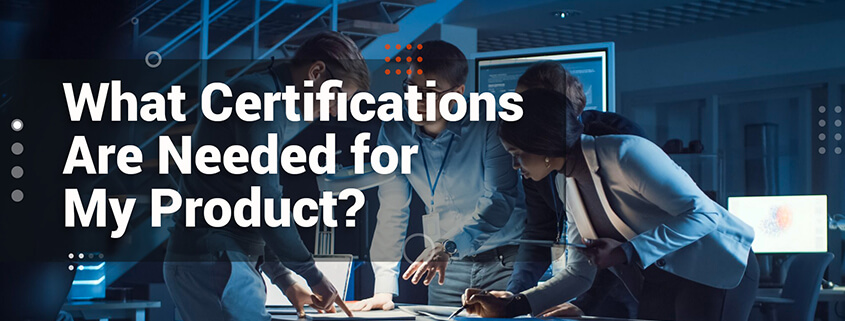An often overlooked step in product design is packaging; yet it’s crucial. In the same way we all judge a book by its cover before reading it, we also judge a product by its packaging before using it.
Many inventors or entrepreneurs start with the design of a product itself, but the packaging still needs to be enticing to your customers. And so today we’ll dive into the psychology of packaging design. We will also cover some classic examples to take inspiration from in recent years and decades ago.
There is a lot more to consider than just cardboard and tape.
Different Elements of Packaging Design
When it comes to making the packaging design decisions for your product, there is an overwhelming number of things to consider—colour, logo, font, material, and so on. While it would be nice if there was a one-size-fits-all approach, there, unfortunately, is not.
Let’s take a quick look at some of the different factors to consider.
Colour
Colour is a crucial part of packaging design. Many researchers and marketers have studied this for decades. In fact, according to one study the four most eye-catching colours that pique our interest subconsciously are red, yellow, green, and pink.
Some other ways in which colour affects us is how black is considered more expensive and browns are considered more natural.
Famed German writer, Johann Wolfgang von Goethe, even published his book on the Theory of Colour in 1810. In it, he talks about how colours can invoke certain emotions in our bodies. By appealing to people emotionally, brands can influence their customers’ purchasing decisions directly. It’s also a great way to create brand recognition. We can all recognize a can of red Coca Cola from far away.
When thinking about colour, it’s overwhelming. Try to reflect on your company values and who you want to attract. Targeting your customer avatar is crucial when making these decisions.
Visual Design
Products that look more aesthetically pleasing are rated as easier to use than their less attractive counterparts. This phenomenon has been noted in design since the first study discovered it in 1996.
While this is often in regards to things like websites or user interfaces, it is still something to keep in mind when designing your packaging. People don’t want to be confused. Minimalism was even one of the top trends in 2020 for product design. Knowing this, it’s important your packaging looks appealing and is not overwhelming visually.
Sustainability
More and more companies are incorporating more sustainable business practices—especially in packaging design. In fact, 66% of people will pay more if a product is more environmentally friendly. Millennials are also a key reason that brands want to embrace more sustainability.
As a result, some companies have created clever packaging solutions for businesses to choose from instead of traditional plastic packaging. Take the company Bloomin as an example. They’ve designed packaging that is biodegradable and plants wildflowers where it is discarded.
Now it’s important to be genuine in your marketing if you do this as some companies have seen this backfire and been accused of “greenwashing.”
“Greenwashing is used to describe the practice of companies launching adverts, campaigns, products etc. under the pretense that they are environmentally beneficial. But they’re often in contradiction to their environmental and sustainability record in general.”
Authenticity is crucial in the modern era we live in, so make sure your brand is intentional with its decisions and accurate, or else it will backfire. Not all press is good press after all.
Copywriting
Not only is the logo important, the writing (or copy) on your packaging is also crucial. If your writing is snazzy, then often you’ll get free advertising through amused customers who share it on social media. Using humour is just one example of a great way to stand out among the other brands.
The writing on the packaging is also a direct connection with your customer. It’s the perfect palace to convey your voice and showcase your brand identity. We all remember those sticks of pink Dubble Bubble gum that had comics tucked inside right? Maybe you didn’t even like the gum, but you probably liked the comic.
Of course, your writing should always be clear, but don’t be afraid to add personality if it suits your audience. In the case of the comics in the gum, it was a genius way to connect to kids at a candy store while hiding a special message under the wrapper.
Practicality
Yet another aspect to consider is how the packaging might improve the use of your products as well. Sometimes, the packaging itself can become the product!
One you might not have noticed is that the Classico pasta sauce jars have measurements on the side of them for you to use while cooking. They also launched a social media campaign encouraging people to reuse the jars instead of simply recycling them.
And this isn’t a new idea, brands have been doing things like this for decades.
In the 1930s, flour companies learned that parents were using the fabric from their packaging to sew clothing for their children. Brands responded by packaging their products with more colourful and fun patterns as a result.
Doing something clever like this is a great way to stand out among the other brands.
Certifications
A final key aspect to include on your packaging is any certifications for your product. Depending on the products and industry, there are a variety of markings or stamps that would be required on your packaging.
Without these, your product can’t legally be sold in some countries. For example, in the U.S., you need to comply with The Fair Packaging and Labeling Act (FPLA) and Uniform Packaging and Labeling Regulation (UPLR). Imported goods also have to follow certain packaging requirements like Title 19.
It might seem overwhelming, but thankfully there are packaging specialists who make sure these different requirements met.
Here are the most important things often required:
- Product Identity Declaration: This just explains what the product is and how it functions.
- Net Quantity Declaration: This covers the size of the production in weight if it’s liquid or solid or in a numerical quantity.
- Dealer’s Name and Principal Place of Business: As in most places, it’s required that the location the product was manufactured is listed.
When it comes to Canada, there are also a few unique packaging requirements. Since the official languages are English and French, all products must have bilingual packaging to be sold across the country.
Summary
While this is just a handful of different elements to consider, there are plenty more ways to create standout packaging that appeals to your customers. At the end of the day, we recommend thinking strategically about the demographics of your customer to make sure it resonates with them.
Not every brand will have the same packaging solutions (and if they did we would all be disappointed!) Hopefully, this article opened your eyes to the ways to freshen up the look of your products once they hit the shelf.
If you found this article helpful, don’t forget to share it and follow us on social media for more useful content like this.
About the Author
Ventrify is a product design and manufacturing firm that helps entrepreneurs bring product ideas from concept to market. We take in fledgling ideas and bring them through our iterative design process to create products our clients can be proud of. Then, we work with manufacturing facilities worldwide to bring our clients the highest quality products at competitive prices.
If you have questions about using prototypes in your product development journey or need help, reach out to us through our Website, Facebook, or LinkedIn.
Article by Victoria Fraser



